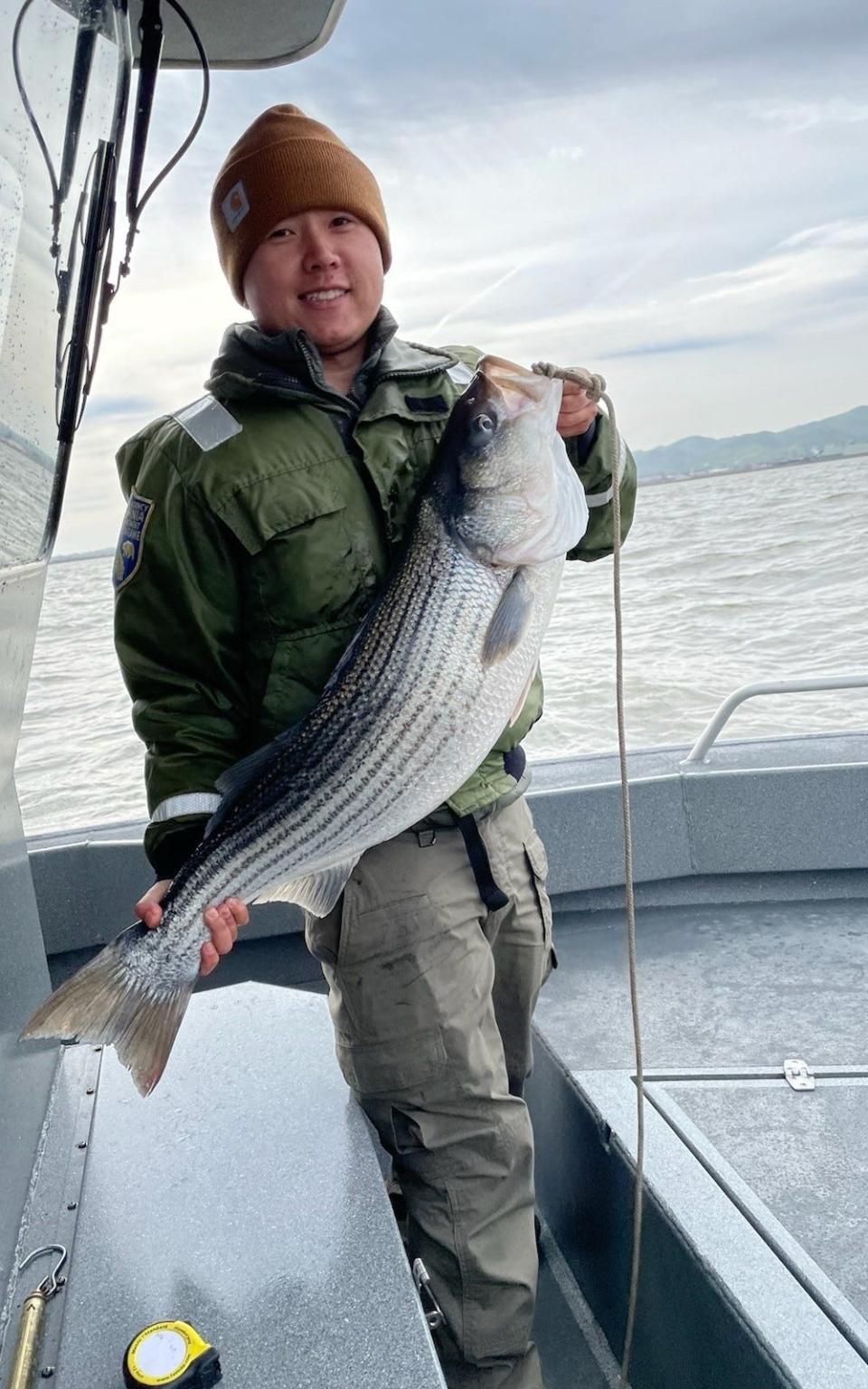Delta striper population to be helped by proposed regulation change

Striped bass fishing has been surprisingly productive all summer in the Sacramento-San Joaquin River Delta. Savvy anglers willing to endure the wind have been catching good numbers of stripers while trolling on both the Sacramento and San Joaquin River sides of the Delta.
For example, Clyde Wands of Sacramento reported top-notch action while fishing with Mike Steer and Mark Wilson on the Delta on Thursday, Aug. 11.
“We caught a total of 29 keepers to 8 pounds,” he reported. “After going to the Sacramento side first and having problems with grass, we went over to the San Joaquin and fished shallow water by the Antioch Bridge on the last of the incoming tide. We then went back to Sacramento at the start of outgoing tide. The grass was gone and the fish were there.”
There, anglers kept their six fish and released the rest back into the river. They found the top action while trolling with silver Rat-L-Traps on the San Joaquin and with rainbow trout Yo-Zuris on the West Bank of the Sacramento from the “sheep barn” to the “vineyard.”
Yet the striped bass this year are largely absent from the San Francisco Bay and ocean waters where for decades they roamed in huge numbers to feed on anchovies and other forage.
Wands, 89, first caught stripers in the 1940s in Chesapeake Bay while fishing with his father and began fishing for stripers in the Sacramento River near Freeport after he came to California in 1956. There has been a dramatic decline in the numbers and size of fish since he started fishing the river and Delta.
Wands, who is also a board member of the Isleton Chapter of the California Striped Bass Association (CSBA), supports a proposed regulation change that would restrict the harvest of striped bass to a “slot limit” between 20 and 30 inches in inland anadromous waters and all waters west of Carquinez Strait.
Under the proposal submitted to the California Fish and Game Commission by the Nor-Cal Guides and Sportsmen’s Association (NCGASA), all striped bass less than 20 inches in length and more than 30 inches in length would have to be released.
“The main cause of decline of the stripers is water exports through the Delta pumps,” Wands said. “Our Delta is not healthy now. But this regulation would help us to preserve stripers for the future.”
Striped bass, a gamefish species introduced to California from New Jersey in 1879, have declined dramatically from 3 million adult fish in the early 1960s to possibly 200,000 fish now, according to Roger Mammon, president of the West Delta Chapter of the CSBA.
“We know the striper population has crashed and the adults are growing slower than in the past,” said Dr. David Ostrach, the founder and former director of the UC Davis Pathobiology Conservation and Population Laboratory. He is now chief scientist at Ostrach Consulting.
The goal of the regulation change is to “protect the species by increasing the minimum length to allow more fish to mature and successfully spawn prior to harvest and to protect the larger fish that tend to be the most prolific spawners and are becoming increasingly rare in the fishery.”
As first submitted, the slot limit would apply to any striped bass caught by recreational anglers in all anadromous inland waters of the state, which includes coastal and Central Valley rivers and streams and the Sacramento-San Joaquin Delta to the Carquinez Bridge near Vallejo, according to a CDFW press release.
However, last week the NCGASA filed a petition for the slot limit to also apply to all waters west of the Carquinez Bridge including San Francisco Bay and the ocean because “Striped Bass Coalition scientists believed that the species needs to be managed on a macro level because it’s an anadromous species,” said James Stone, NCGASA President. The regulation change will not apply to lakes.
Under existing regulations, anglers fishing for striped bass in anadromous waters are limited to two striped bass per day, each with a minimum size of 18 inches in total length. The daily limit of two fish would not change under the proposal.
“CDFW scientists are currently evaluating the available angler survey and monitoring data to help determine how this proposed change may affect the striped bass fishery, including harvest opportunities and biological processes.,” the CDFW stated.
CDFW is requesting input from the public on the interest and support of the proposed regulation change before making recommendations to the California Fish and Game Commission. CDFW has developed a Striped Bass Angler Preference Survey to solicit input. Anglers can participate by following this link: surveymonkey.com/r/SPJL6DR(opens in new tab).
CDFW and the NCGASA will also host a public meeting on the proposed regulation change on Wednesday, August 24, 2022. Those interested can attend and participate either in person or remotely (online or by phone).
The meeting will take place from 6 to 8 p.m. within CDFW’s Fisheries’ Branch headquarters, 1010 Riverside Parkway, West Sacramento, 95605, in the California Poppy Conference Room. Participants can join the meeting online at: https://us06web.zoom.us/j/81676220423
Those wishing to listen or participate by phone can do so by calling (866) 390-1828. CDFW staff will provide updates on the current state of the striped bass fishery along with existing angler survey data.
“The meeting will give the public the chance to speak for one minute on whether a slot limit is warranted or wanted,” said Stone. “The science shows all anadromous species have suffered concurrently together over the past few decades. Without any angler-involved management such as a slot limit, the striped bass has a slim chance of surviving.”
On August 24 at noon, anglers can go to the Nor-Cal Guides and Sportsmen’s Association Facebook page for a live update prior to the meeting.
Contact Stockton Record Correspondent Dan Bacher at danielbacher53@gmail.com.
This article originally appeared on The Record: Proposed regulation change to help grow Delta striper population

